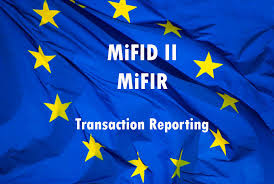The European Securities and Markets Authority (ESMA), the EU’s securities markets regulator, recently published the results of the 2020 Common Supervisory Action (CSA) on UCITS liquidity risk management (LRM). The CSA showed that the overall level of compliance with the applicable rules is satisfactory in most cases, but there is scope for improvement in liquidity management for some UCITS analysed. The exercise also highlighted areas where ESMA will work to further promote convergence across National Competent Authorities (NCAs). This exercise was launched on 30 January 2020. Its purpose was for all NCAs to conduct coordinated supervisory activities to assess whether UCITS managers comply with their LRM obligations. The CSA was also an opportunity to strengthen the ongoing exchange of supervisory knowledge and experience among NCAs.
Steven Maijoor, Chair, said: “Effective liquidity management is essential for the protection of investors, maintaining market integrity and reducing systemic risk, all of which support financial stability. The 2020 CSA aimed to get a comprehensive market overview, including detailed insights into the practical implementation and quality of liquidity risk management processes. The outbreak of the COVID-19 crisis gave further impetus to deepening the exercise.
Overall, NCAs reported that most UCITS managers have demonstrated that they have implemented and applied sufficiently sound liquidity risk management processes. However, the exercise also identified shortcomings in a few cases and the need for improvements in certain key areas. Consequently, NCAs are following up with market participants to address the supervisory findings identified in the CSA at the individual and collective level. These results demonstrate the importance of this additional supervisory convergence tool.”
The UCITS regulatory framework includes a broad range of LRM provisions which aim to ensure that UCITS’ investors are able to redeem their investments on request. They require continuous attention to liquidity risk at all stages of a UCITS’ life, from the design phase to the investment process so that the liquidity profile of the UCITS’ underlying investments is appropriate to the UCITS redemption policy.
Compliance with the UCITS LRM provisions contributes to ensuring investor protection, financial stability and the orderly functioning of financial markets.
Main results
This CSA was an important exercise to shed light on potential supervisory risks and market practices in the sector. Overall, most UCITS managers have demonstrated that they have implemented and applied sufficiently sound LRM processes. However, in a few cases, some adverse supervisory findings were identified, particularly linked to documentation, procedures and methodology. In some cases, the liquidity assessment before investing should be strengthened, as well as the data reliability verification and the internal control framework.
To further improve the quality of LRM processes, market participants should critically review their LRM frameworks to ensure that none of these adverse supervisory findings exist in their frameworks. More generally, they should also ensure ongoing compliance with all relevant UCITS regulatory requirements, and associated EU and national guidance.
NCAs supervised the LRM practices of UCITS managers in their respective Member States with a high degree of convergence. Despite this, ESMA has identified the need for further convergence work with respect to NCAs follow-up actions, including enforcement actions where appropriate.
Next steps
NCAs will undertake follow-up actions on individual cases to ensure that regulatory breaches as well as weaknesses identified are remedied, especially regarding the adverse supervisory findings identified. Further work will be carried out at the level of ESMA to promote convergence in the way NCAs follow-up on the supervisory findings made during the CSA.
Source: ESMA






